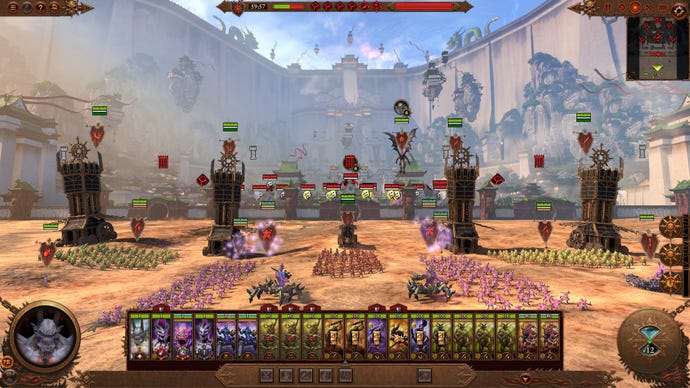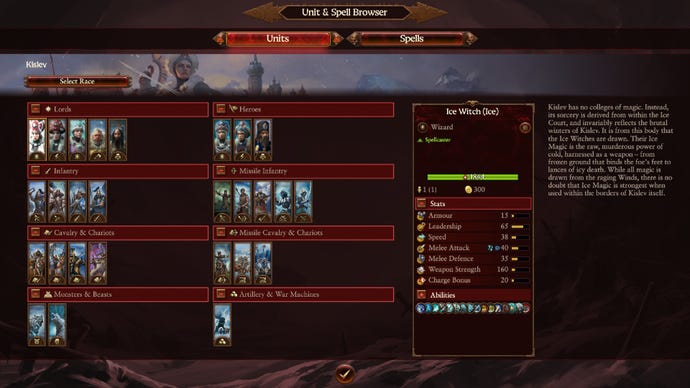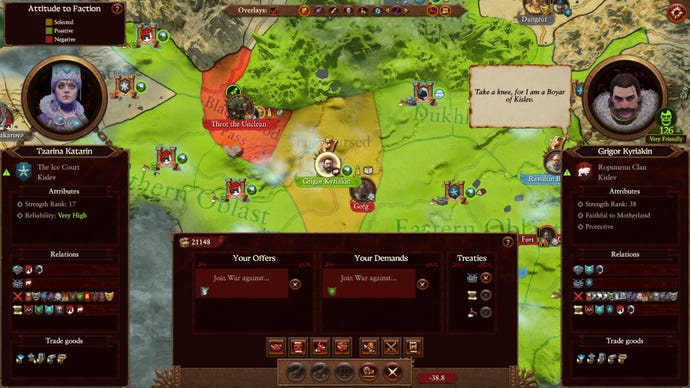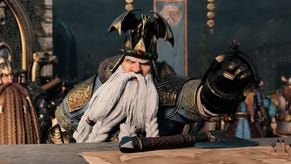Total War: Warhammer 3 beginner's guide: Total War: Warhammer 3 tips and tricks
Conquer your enemies and drive back the Daemons with our Total War: Warhammer 3 beginner's guide
Looking for a Total War: Warhammer 3 beginner’s guide? Humans, Daemons, and Ogres collide in a brutal war, as Total War: Warhammer 3 is finally here. The strategy threequel brings some welcome changes to the series, including a siege battle rework and survival battles that will provide new thrills for Total War enthusiasts. However, if you’re new to the Total War franchise, or have decided to give Total War: Warhammer 3 a try on Game Pass PC, then you might feel a little lost. Fortunately, we’ve got a simple guide that should help explain everything you need to know.
Below, you’ll find 10 essential tips and tricks for Total War: Warhammer 3 that will explain the basics you need to learn if you want to become a powerful leader and conquer your foes.
On this page:
- Each faction has unique mechanics
- Understanding the campaign map is crucial
- War is the name of the game
- Learn unit strengths and weaknesses
- Use the idle hotkey
- Flank with flying units
- Recruit lords to gain more armies
- Balance your treasury
- Diplomacy is key
- Slay the Chaos gods (but close some rifts)
Each faction has unique mechanics
This is a beginner’s guide, so let's start with the basics. Total War: Warhammer 3 has seven playable factions (or eight if you own the Ogre Kingdoms DLC). These include:
- Kislev
- Cathay
- Khorne
- Nurgle
- Tzeentch
- Slaanesh
- Legion of Chaos
- Ogre Kingdom
Factions have unique mechanics that you will focus on during their campaign, which may drastically alter the way you play and impact your journey. When playing as Kislev, for example, you'll find yourself in an internal power struggle on the brink of a civil war. You must gather devotion and supporters so that you can overpower the opposing Kislev faction and claim the throne. Whichever sub-faction earns 600 supporters first can consolidate the other kingdom and potentially earn more settlements and armies. The Legion of Chaos, on the other hand, can heavily customise their Lord and available units by dedicating sacrifices to the different Chaos gods, which makes it an extremely violent faction that benefits from slaughtering and razing settlements. Diplomacy is a lot harder for all of the Chaos factions (Khorne, Nurgle, Tzeentch, Slaanesh, and the Legion of Chaos), as they are seen as a scourge on the land.
Every faction also splinters into smaller sub-factions, although the differences between these sub-factions are far less substantial. For example, Kislev splits into The Ice Court and The Great Orthodoxy, which have slightly different boons and nerfs for Kislev units and settlements. The Ice Court have more control over their settlements, which will help prevent rebellions, while The Great Orthodoxy gets a leadership boost for certain units, increasing their morale in battle.
As you can see, these unique mechanics and storylines make each faction feel very different, so spend time thinking about which one suits your playstyle best. If you prefer diplomacy and the intricacies of negotiation, you might enjoy Kislev, while warlords and tyrants will prefer playing as one of the Daemon Chaos factions. Kislev are an excellent starter faction if you want to balance diplomacy and war while learning how to use a range of unit types.
For a full ranked list of the factions, check out our Total War: Warhammer 3 factions tier list.
Acquire provinces to expand
So, you’ve chosen a faction and loaded into your first campaign. There’s a lot to take in here, but hopefully we can simplify it a little. The campaign map is huge, but most of it will be covered in fog of war. Regardless, you should find that the little section you can see is split into provinces. These provinces contain settlements ruled by the various factions at play in your campaign. As you explore, you will uncover more provinces that combine to make up the overall map.
The main actions you’ll take during your turn will consist of moving your armies, managing your settlements and provinces, and either battling against or striking up diplomatic deals with other factions. Diplomacy is managed via the small flag icon in the bottom right of the screen, while wars and relationships are managed through the Known Factions tab in the top right. To find your settlements and manage the minutiae of ruling, you should head to the provinces tab and select a province that you rule. This will bring up the settlements in that province, which you can then manage by building new structures and changing various settings.
Capturing more provinces is cruicial if you want to expand in Total War: Warhammer 3, as they grant more income and give you space to let your army rest and recover between battles. To capture a province, you'll need to own the majority of its settlements. You can take control of a settlement by asking the current ruler to confederate into your faction or by forcing them out through war.

War is the name of the game
While diplomacy can get you far (and it is indeed crucial to your survival as a faction), you’ll find yourself fighting more often than not. Whether you’re warring against other factions or just battling Daemons that ravage the world, you’ll need to raise armies and fight for survival. Make sure to regularly check in on your armies to see how your units are faring, whether they’re ready for more combat, and whether you need to recruit some reinforcements to bolster your military might. You can see all of this information by clicking on an army on the campaign map.
If your armies need to rest, send them to a nearby settlement that should be safe from attack. They can then recover in the garrison before heading back out into the field. If you decide that you don't need the army anymore, we recommend dismissing the troops to cut down on costs. Maintaining an army costs gold, so you'll want to keep a keen eye on your treasury total at the top of the screen to make sure you can afford all of the upkeep costs for each of your armies.
Before you dive into a Total War: Warhammer 3 campaign, you should prepare yourself for a fight. Completing a campaign requires bloodshed, so rallying for battle and holding armies as a deterrent, even when not currently fighting, is essential. Below, we'll delve into some crucial combat tips that you need to remember if you want to win wars in Total War: Warhammer 3.
Learn unit strengths and weaknesses
Each faction has completely unique units that suit different playstyles. Tzeentch has lots of spellcasters, while Khorne is entirely focused on melee combat, for example. The only exception to this is the Legion of Chaos, which can use a range of units from Khorne, Nurgle, Tzeentch, and Slaanesh. The different units available for each faction will drastically change how you fight.
When building your armies, you should use the Unit and Spell browser to learn more about the units for your faction. Found in the top left corner of the screen, you can use this to hover over each unit to learn their strengths and weaknesses, which will help you compose your army.
For example, melee infantry units are a strong foundation, but they’re weak to missile units that fire from afar. To deal with those pesky ranged enemies, you’ll want something that is strong against them, like cavalry. Understanding the strengths and weaknesses of each unit for your faction will help you flesh out your ranks and build a strong party that can fight together to overcome any opponent.
Use the idle hotkey
Whether it’s Daemons emerging from the Realm of Chaos, or hostile factions trying to seize your settlements, war is a necessity in Total War: Warhammer 3. When you go into battle, you’ll need to control a bunch of units with precision, ordering them to attack various enemies and orchestrating strategic tactics that will lead your army to victory. Amidst the chaos, it’s easy to forget about certain units, causing them to stand idle waiting for a command.
Fortunately, Total War: Warhammer 3 adds an idle hotkey that you won’t need to mod in. By default, clicking the backslash key (\, next to Z) will cycle through any units that are waiting for a command, allowing you to quickly see which units aren’t currently in a battle. Directing idle units could be the key to victory in a particularly chaotic battle, so use the idle hotkey often to ensure all of your units are engaging in combat.
Flank with flying units
The key to victory when fighting hostile armies lies in your strategy and tactics. If you find yourself surrounded, the enemies will slaughter your ranks and leave you in a messy state. However, if you manage to get the high ground or flank your opponents, you’ll find yourself on the path to an easy win.
Flanking is an incredibly powerful tactic, and it is easy to execute with flying units. Flying units are nothing new to the Total War franchise, and most factions have flying units that you can recruit in Warhammer 3. However, in Total War: Warhammer 3, flying units can land on the field and engage in melee combat or cavalry charges, making them perfect for flanking. We recommend using flying units to pass over hostile ground units so that you can easily get behind them. Then, use the toggle flight button at the bottom of the units panel to make your flying units land.
When they’re on the ground, you can charge into hostile units from behind, causing massive damage. There are plenty of other tactics that you’ll discover and develop throughout Total War: Warhammer 3, but this is one of the new battle improvements that you should use to your advantage as much as possible.

Recruit lords to gain more armies
As the world expands and you find yourself balancing relationships with a plethora of factions, you might find that you need more armies. These could help you explore in more directions, overpower particularly strong enemies, or defend provinces from hostile factions. To build more armies, you’ll need to recruit Lords.
To recruit a new Lord, click on the settlement where you want them to spawn and select recruit Lord on the bottom tab. This will bring up a list of Lords who are available for hire. These Lords each have their own strengths that you should consider before choosing who to recruit. These skills might make the Lord better at defending a keep, or it might make them excellent attackers, for example. After choosing a Lord, they’ll spawn on the campaign map. You can then build their army in the usual way and send them off on their travels.
Balance your treasury
With that in mind, you might rush to recruit large swathes of cannon fodder to your armies. However, as you increase the size of your war parties and add to the ranks, you’ll also raise your upkeep costs. This will detract from the income you earn every turn, which could quickly lead to a deficit in your treasury. Without a healthy flow of money, you can't sustain armies or settlements and will quickly fall into ruin.
It’s important to balance your resources and spread them across your empire. Sure, more troops might help you win one or two fights, but it could lead to dwindling resources and stagnant settlements that can't grow. Everything costs coin, so don’t rush to improve your army and neglect your treasury balance. Amassing wealth so that you can upgrade settlements and improve relations with other factions is equally important.
To increase your income so that you can maintain more troops and settlements, you should make sure you construct any buildings that provide more gold each turn. You can also make trade deals with other factions that will boost your income while you remain allies. Of course, warmongers can also capture and raze settlements to take gold from other factions.

Diplomacy is key
You’re bound to fight a fair few hundred battles over the span of an entire campaign. However, there’s no need to trudge into battle every time you come across another Lord. Diplomacy is equally important and it presents plenty of tools that you can use to bolster your empire.
Trade agreements can increase your wealth as mentioned above, while various pacts will ensure your safety from other armies and allow your lords to travel through neighbouring factions’ borders. As you gain trust and notoriety, you can even form defensive and military alliances to unite with other factions and fight off foes that you have in common.
Slay the Chaos gods (but close some rifts)
Of course, the war with the Daemons of Chaos can't be avoided. In Total War: Warhammer 3, you will encounter Rifts that you can use to enter the Realm of Chaos. This is a hellish landscape that you can explore to find the Chaos gods and fight them. Defeating a Chaos god, also known as a Daemon Prince, will grant you their soul, and collecting all four souls lets you complete the grand objective that all factions share: saving Ursun, the bear God. They all have different reasons, sure, but entering the Realm of Chaos and collecting the souls will help you complete the campaign, so it is essential at some point during your journey.
However, you can also close these rifts, which we highly recommend doing near your settlements. If you don’t close Rifts and just leave them to fester on the map, Chaos Daemons will pour out with armies eager to ravage and destroy your people. This could prove destructive if you're already at war with other factions, as you might find yourself quickly overwhelmed by hostile troops.
To close a rift, simply send an army over and interact with it to open a menu. In this menu, you can choose to enter the Realm of Chaos or seal the rift, preventing travel in either direction.
That covers all the tips and tricks that you need to know about Total War: Warhammer 3, covering a range of new and old mechanics that are essential if you want to achieve victory in your campaign. If you want to learn more, check out our Total War: Warhammer 3 review.









